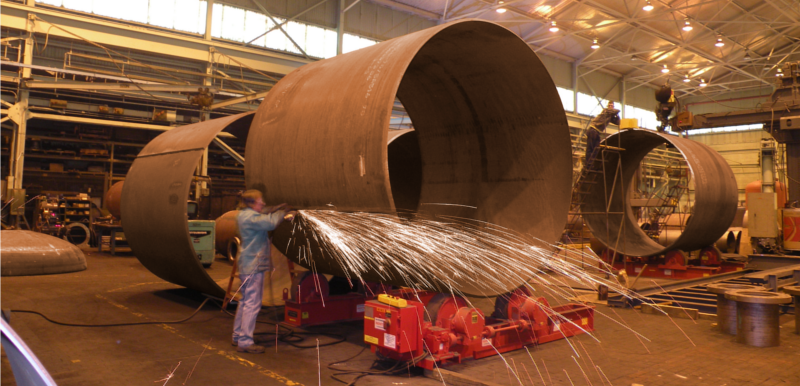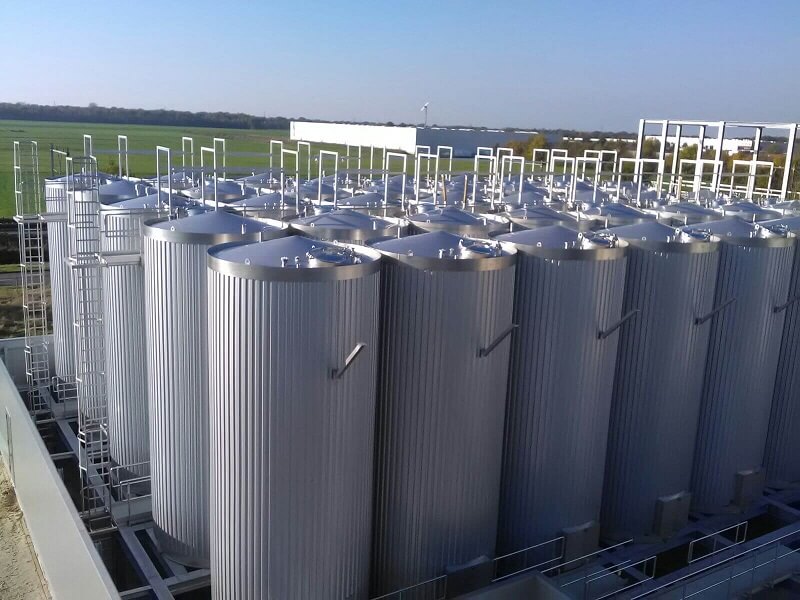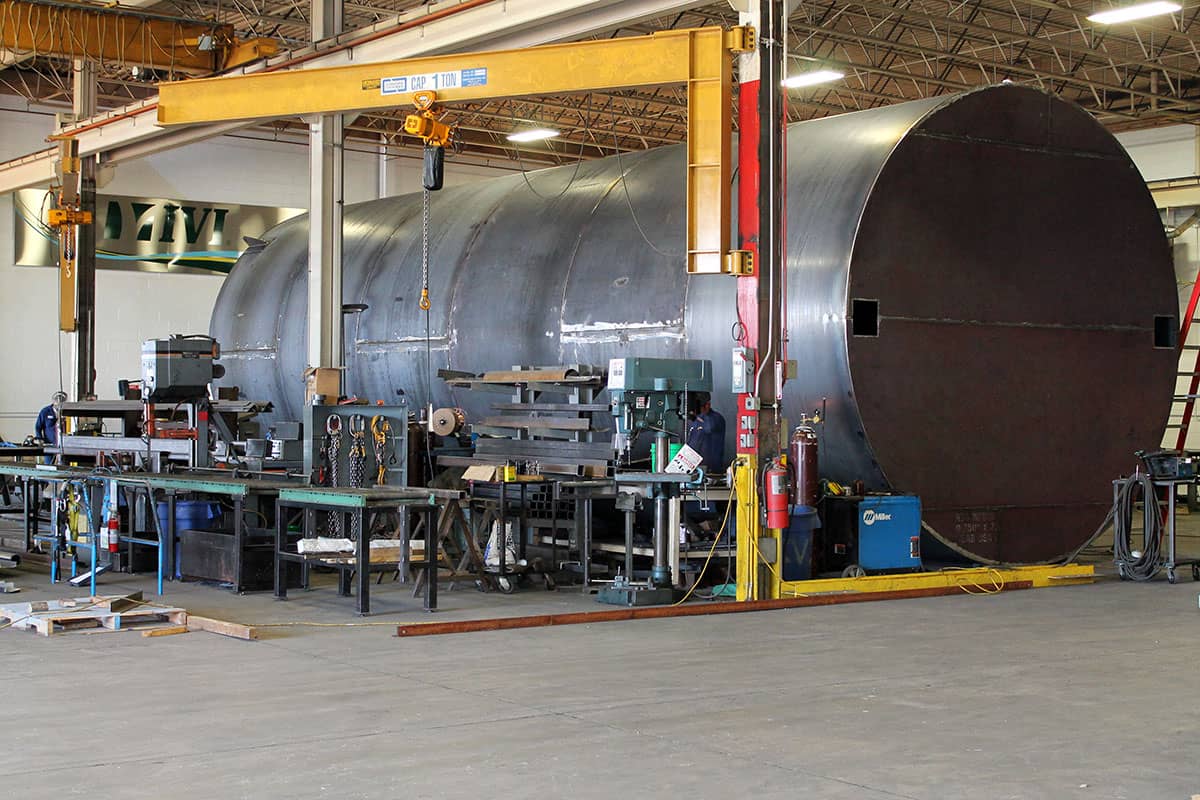The Future of Storage Tank Manufacturing: Trends and Technologies to See
The storage tank manufacturing sector gets on the cusp of a pivotal advancement, driven by emerging trends in clever materials, automation, and sustainability. As industries progressively prioritize ecological duty, developments such as eco-friendly compounds and IoT-driven monitoring systems are improving operational standards. Furthermore, the growing demand for modification and modular styles suggests a shift in the direction of even more versatile manufacturing methods. Recognizing these fads not just highlights the obstacles in advance yet additionally discloses possibilities that could redefine the landscape of storage tank manufacturing in the coming years. What effects might these developments hold for market stakeholders?
Innovations in Smart Products
Over the last few years, the storage tank manufacturing sector has actually experienced a considerable uptick in the adoption of clever products, reinventing style and functionality. Smart products, which can respond dynamically to ecological changes, have enabled manufacturers to produce containers that are not just more resilient but additionally more efficient in their functional abilities.
One remarkable advancement is the integration of shape memory alloys and polymers that can adapt to differing stress and temperatures. This versatility enhances the architectural honesty of containers, decreasing the risk of leakages and failures (Texas Oilfield Storage Tank Company). In addition, these products typically display self-healing properties, which even more prolongs the life-span of storage containers, reducing upkeep costs and enhancing security
Additionally, the incorporation of sensors within wise materials enables for real-time monitoring of container problems, supplying essential data that assists in predictive upkeep and risk management. This data-driven approach not only boosts operational performance however additionally lines up with ecological sustainability objectives by maximizing resource use and protecting against spills.
Rise of Automation Technologies
The surge of automation technologies is changing storage tank production by incorporating robotics right into manufacturing processes, enhancing efficiency and precision. Furthermore, the implementation of clever sensors makes it possible for real-time surveillance, guaranteeing quality assurance and safety and security standards are fulfilled. AI-driven process optimization better streamlines operations, decreasing expenses and boosting total performance in the sector.
Robotics Integration in Manufacturing
Robotics combination is transforming the manufacturing landscape, specifically in the storage tank industry. As manufacturers venture for enhanced efficiency and accuracy, robotics innovations are ending up being necessary tools for improving manufacturing processes. Automated systems can doing repetitive tasks with better rate and accuracy than human labor, reducing the likelihood of errors and improving general item top quality.
One of the crucial advantages of robot combination is the capacity to maximize workflows. Automated robotic arms can take care of hefty materials, weld components, and perform assessments, which minimizes physical pressure on workers and reduces downtime. This change not just enhances security however also enables human workers to concentrate on more complicated and value-added tasks.
Robotics can assist in adaptable manufacturing, allowing firms to adjust promptly to altering market demands. Advanced shows permits robotics to easily switch over in between different tasks and items, which is specifically valuable in a sector where personalization is significantly desired
As robotics modern technology remains to evolve, manufacturers can anticipate enhanced capacities, consisting of enhanced maker discovering algorithms and boosted reality applications, further driving effectiveness in storage tank manufacturing and establishing brand-new requirements for the sector.
Smart Sensors Deployment

In addition, the information gathered from these sensing units can be leveraged to optimize the supply chain, guaranteeing that materials are available when needed while decreasing waste. This level of understanding allows manufacturers to respond swiftly to transforming conditions and consumer demands, enhancing general performance.
Additionally, wise sensors add to enhanced regulative compliance by continuously monitoring environmental factors and making sure adherence to safety and security requirements. As the sector proceeds in the direction of even more sustainable practices, the capacity to keep an eye on exhausts and resource consumption in real-time is indispensable.
AI-Driven Process Optimization
Manufacturers in the storage tank sector are increasingly utilizing the power of AI-driven process optimization to boost operational effectiveness and decision-making capacities. By integrating sophisticated algorithms and device discovering methods, business can analyze large quantities of data generated throughout the production procedure. This data-driven method makes it possible for real-time tracking of manufacturing metrics, resulting in even more enlightened decisions and prompt interventions.
AI technologies help with predictive upkeep, enabling manufacturers to expect tools failings prior to they occur, consequently lowering downtime and maintenance costs. Furthermore, these systems can optimize source allocation by analyzing production patterns and adjusting operations, guaranteeing that materials and labor are used effectively.
Additionally, AI-driven optimization enhances quality control by determining prospective problems during the production procedure. Automated assessments powered by AI can rapidly spot inconsistencies, guaranteeing that just products satisfying stringent quality standards proceed via the manufacturing line.
As the storage tank market remains to embrace automation, AI-driven procedure optimization sticks out as a transformative force, driving innovation and competitiveness. By leveraging these technologies, manufacturers can not just enhance procedures but additionally adjust swiftly to market demands, positioning themselves for sustainable development in a significantly complicated manufacturing landscape.
Concentrate On Sustainability Practices
As the storage tank manufacturing market evolves, a substantial emphasis is put on sustainability methods. This consists of the adoption of eco-friendly materials, the application of energy-efficient manufacturing processes, and the integration of circular economic situation principles. By focusing on these efforts, manufacturers not only reduce their ecological impact but likewise improve the long life and efficiency of their items.
Environmentally Friendly Materials Fostering
Increasingly, the storage tank production industry is welcoming environmentally friendly materials as a fundamental element of sustainability practices. This change is driven by heightened ecological recognition and governing pressures, triggering manufacturers to seek choices that reduce environmental effect.
Naturally degradable compounds and recycled steels are gaining grip, offering both efficiency and lower carbon impacts. For instance, making use of high-recycled-content steel not only minimizes the need for virgin materials but additionally enhances the total sustainability of the product lifecycle. Furthermore, manufacturers are discovering bio-based resins that provide sturdiness while being much less dangerous to the environment.
Moreover, the adoption of environmentally friendly finishes and finishes, which are cost-free from volatile organic compounds (VOCs), shows the market's commitment to minimizing air contamination and over here promoting healthier working problems. These innovations not only line up with global sustainability goals however also fulfill the expanding market need for greener items.
The combination of environment-friendly products in storage tank production is not simply a trend; it stands for a positive approach in the direction of liable production that focuses on both ecological stewardship and economic practicality, setting a brand-new standard for future advancements in the market.
Energy-efficient Manufacturing Processes
There is an expanding recognition within the storage tank manufacturing market of the importance of energy-efficient processes as a crucial element of sustainable techniques. As the sector encounters boosting stress to lower its carbon footprint, manufacturers are carrying out cutting-edge modern technologies and methodologies focused on lessening energy consumption throughout the production cycle.
One considerable fad is the fostering of innovative manufacturing techniques such as lean manufacturing and automation. These techniques improve operations, minimize waste, and boost productivity, while additionally lowering energy usage. In addition, the assimilation of renewable resource sources, such as solar and wind power, right into manufacturing facilities is becoming much more prevalent, allowing business to run sustainably and reduce dependancy on fossil fuels.
Energy-efficient equipment and equipment are being prioritized in new investments, as manufacturers look for to maximize their power intake. The usage of power management systems makes it possible for real-time tracking and analysis, promoting continuous enhancement in energy efficiency.
Circular Economic Situation Combination
A notable change in the direction of round economic situation integration is changing sustainability practices within the storage tank manufacturing industry. This approach highlights the importance of resource effectiveness, waste reduction, and the recycling of materials throughout the production lifecycle. By taking on round concepts, manufacturers are progressively focused on making storage tanks that prioritize repairability, longevity, and recyclability.
As part of this adjustment, firms are discovering cutting-edge products and manufacturing methods that lessen ecological influence. The consolidation of recycled steels and plastics not only lowers the demand for virgin resources however likewise decreases carbon emissions linked with removal and handling. In addition, manufacturers are carrying out take-back systems that facilitate the refurbishment and recycling of end-of-life storage tanks, thus closing the loophole in the production cycle.
Collaboration among stakeholders, consisting of providers and consumers, is crucial for cultivating a circular economic situation (Storage Tank Manufacturing). This partnership allows the sharing of finest techniques and encourages the advancement of lasting supply chains. Eventually, incorporating circular economic situation concepts right into storage tank manufacturing not only improves environmental stewardship but also positions companies to satisfy progressing governing criteria and customer expectations for sustainability
Boosted Safety Methods
In today's production landscape, improved safety methods have come to be critical for storage tank manufacturers. The sector encounters increasing regulative scrutiny and needs for higher safety requirements as a result of the potential threats related to the storage space of unsafe materials. Consequently, manufacturers are embracing a complex method to improve safety actions throughout the production procedure.
One significant development is the implementation of sophisticated threat assessment tools that determine possible threats during the style and production phases. These tools help with positive measures to minimize threats prior to they intensify into vital problems. Manufacturers are spending in employee training programs that emphasize security techniques, assuring that all employees are well-versed in emergency procedures and equipment handling.
In addition, there is a growing focus on the usage of high-quality materials and ingenious designs that boost structural integrity and minimize the possibility of leaks or failures. Normal maintenance checks and rigorous screening procedures are additionally being incorporated into the manufacturing lifecycle to ensure conformity with safety policies.
Integration of IoT Solutions

IoT devices help with predictive maintenance, which lessens downtime and extends the life expectancy of storage tanks. By evaluating information collected from sensing units, manufacturers can execute and predict possible failures maintenance tasks before critical problems emerge. This positive strategy not just conserves costs however likewise assures compliance with security guidelines.
Furthermore, IoT combination sustains far better inventory management by supplying accurate, real-time data on stored products. Texas Oil & Gas Storage Tank Fabrication Authority. This ability helps manufacturers optimize their supply chains, making sure that necessary resources are offered when needed, consequently boosting overall productivity
Additionally, the application of IoT options makes it possible for boosted interaction in between storage tanks and centralized management systems, streamlining procedures. As the storage tank manufacturing sector proceeds to adopt IoT modern technologies, we can expect significant advancements in safety and security protocols and operational efficiencies, inevitably causing more resilient production techniques.
Personalization and Modular Style
Versatility in design has actually ended up being a cornerstone of modern storage tank production as personalization and modular design alternatives gain traction. The evolving demands of industries such as oil and gas, chemicals, and water management demand tailored remedies that fit specific functional requirements. Modification makes it possible for manufacturers to produce tanks that fulfill distinct specs concerning dimension, functionality, material, and shape, making sure peak efficiency and efficiency.
Modular style, on the other hand, permits the setting up of pre-fabricated components, resulting in substantial time and expense financial savings. This approach assists in quick deployment and scalability, enabling businesses to adapt their storage space abilities in action to varying need. Additionally, modular systems can be quickly expanded or reconfigured, reducing downtime and boosting functional adaptability.
The integration of sophisticated production technologies, such as 3D printing and computer-aided style (CAD), additional enhances personalization possibilities. These technologies enable accurate engineering and rapid prototyping, enabling fast adjustments and iterations during the design procedure.

Regulatory Adjustments and Compliance
Governing adjustments and conformity requirements regularly form the landscape of storage tank manufacturing, engaging manufacturers to stay adaptable and cautious. With boosting environmental concerns and the press for sustainable techniques, regulative bodies are implementing stricter guidelines worrying discharges, products, and security standards. The U.S. Environmental Defense Firm (EPA) and numerous state agencies are modifying laws that govern the style and installation of storage tanks, specifically those made use of for hazardous compounds.
Manufacturers have to not just adhere to existing policies yet additionally anticipate future changes, requiring recurring financial investment in r & d. This consists of taking on innovative materials and technologies that boost container integrity and environmental management. In addition, conformity with regulations such as the Spill Prevention, Control, and Countermeasure (SPCC) guideline is imperative for manufacturers to stay clear of lawful responsibilities and large penalties.
Furthermore, the integration of electronic modern technologies promotes compliance tracking and reporting, enabling manufacturers to keep transparency and effectiveness. As policies proceed to advance, staying informed and positive is vital for storage tank manufacturers to ensure conformity, safeguard public wellness, and secure the environment, inevitably shaping an extra lasting industry.
Regularly Asked Concerns

What Are one of the most Common Products Made Use Of in Storage Tank Manufacturing?
The most usual materials made use of in storage tank manufacturing consist of carbon steel, stainless steel, and fiberglass. Each product uses unique advantages, such as durability, rust resistance, and adaptability to different storage needs and environmental problems.
How Do Storage Containers Influence Local Ecosystems During Installment?
Tank setup can interrupt local ecosystems by changing land usage, impacting water drain patterns, and potentially introducing toxins. Proper site evaluations and ecological administration methods are necessary to mitigate these effects and shield biodiversity.
What Is the Average Life-span of a Modern Storage Tank?
The typical life-span of a modern-day storage tank usually ranges from 20 to three decades. Elements such as worldly top quality, environmental problems, and upkeep methods considerably influence durability and general efficiency throughout their functional lifespan.
Just How Do Manufacturers Make Sure Top Quality Control in Production?
Manufacturers ensure quality assurance via rigorous testing protocols, adherence to sector standards, and continuous monitoring during manufacturing (Oil & Gas Storage Tank Fabrication). Advanced technologies such as automation and real-time data analysis further boost consistency and dependability in storage tank manufacturing procedures
What Are the Prices Connected With Maintaining Storage Space Tanks?
Maintaining storage tanks includes different expenses, consisting of regular assessments, fixings, governing conformity, rust prevention, and prospective environmental remediation. These expenses can considerably influence total functional budget plans and require proactive monitoring to assure lasting performance and security.
As manufacturers progressively accept automation innovations, the implementation of smart sensing units is coming to be a crucial element of modern production processes in the storage space container industry. Manufacturers in the storage space container market are increasingly using the power of AI-driven process optimization to enhance operational performance and decision-making abilities. Significantly, the storage tank production market is welcoming environment-friendly materials as a fundamental facet of sustainability methods. In today's production landscape, boosted safety protocols have actually become important for storage space container manufacturers. Regulatory modifications and conformity needs frequently form the landscape of storage space tank production, compelling manufacturers to remain versatile and alert.